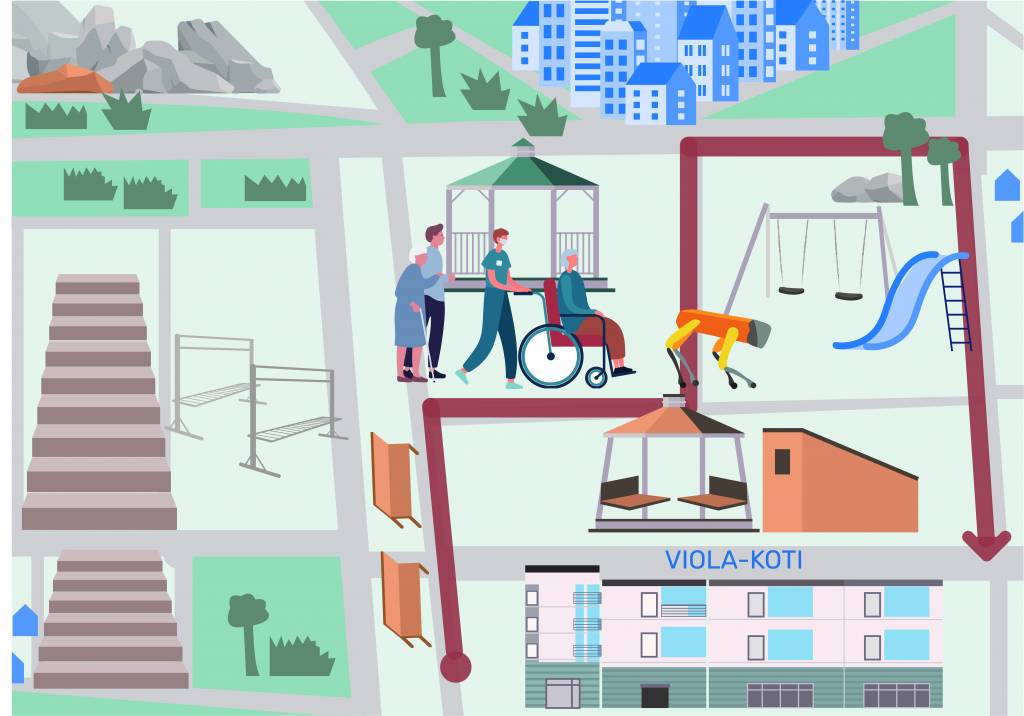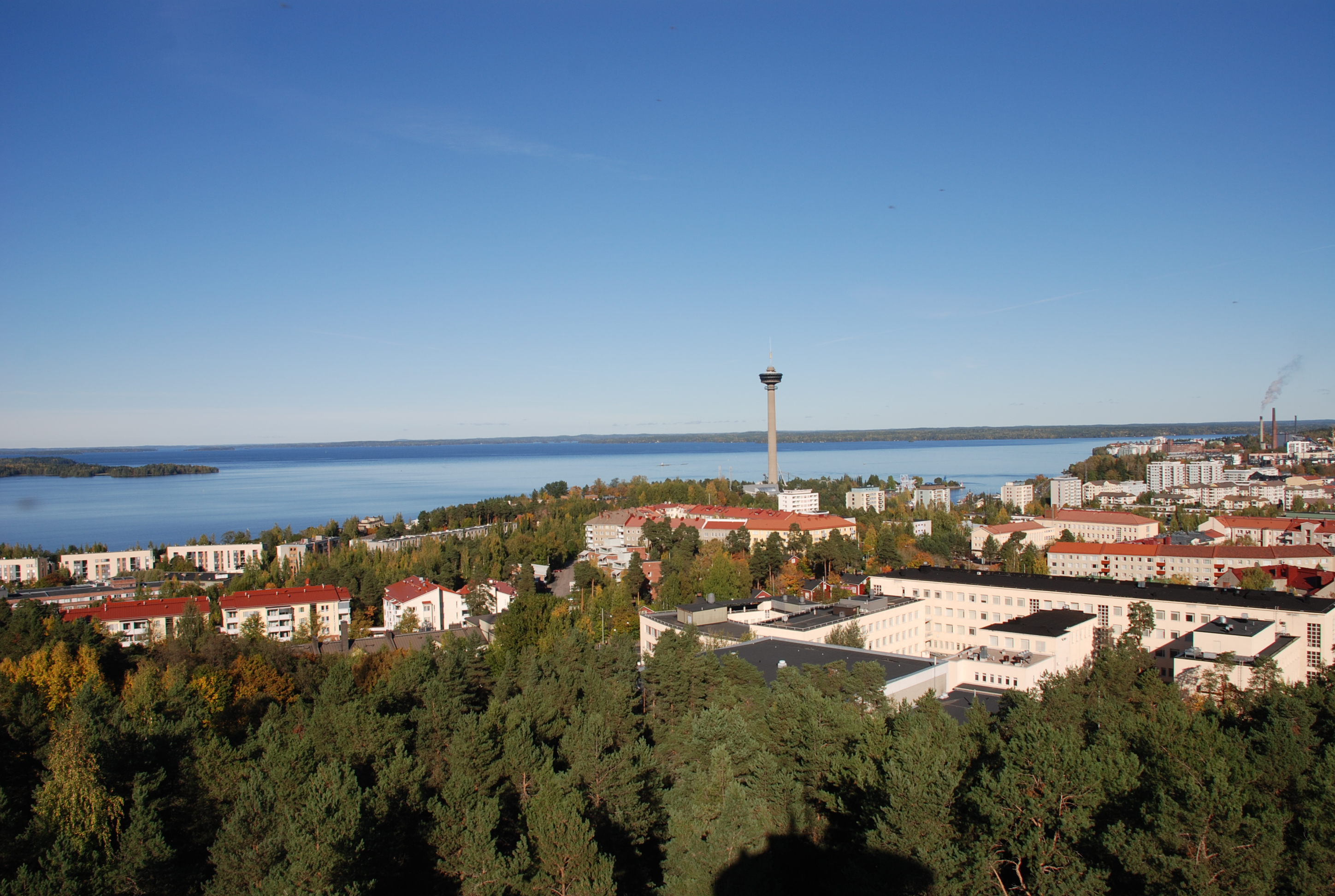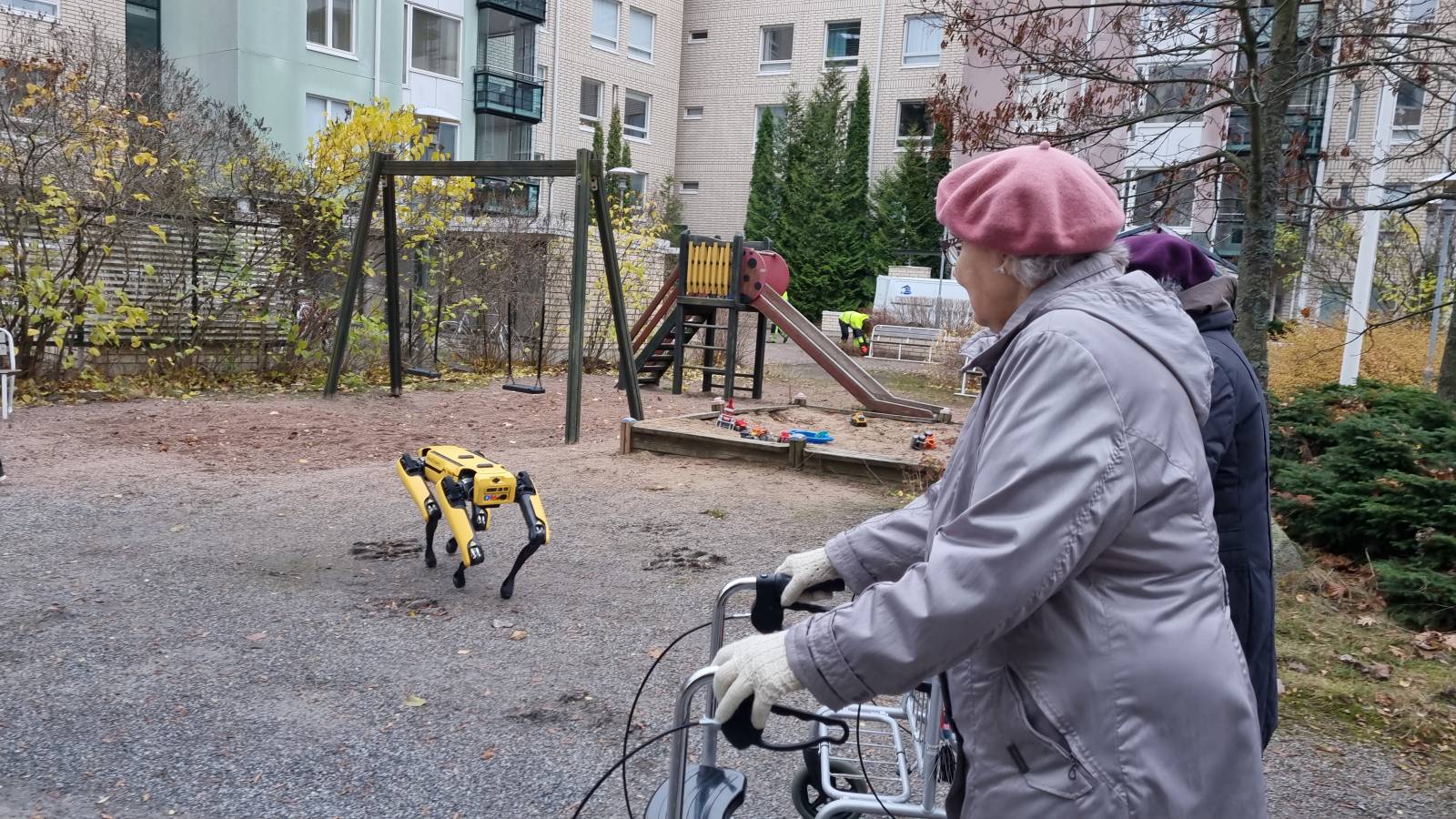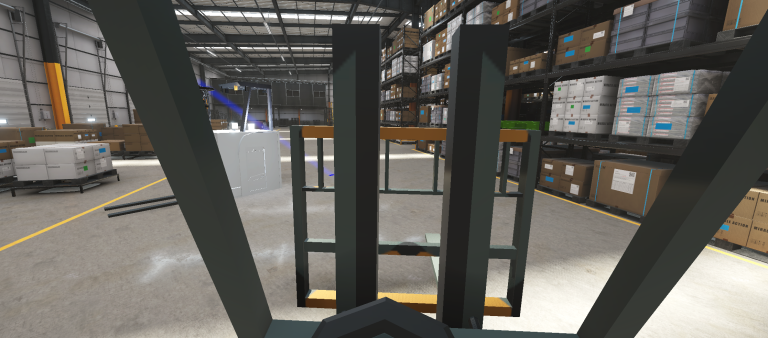
With the increasing life expectancy, assistive robotics has been integrated into day-to-day activities to support long-term senior healthcare. Robots can also act as interesting objects to learn about for the seniors, and they can bring in inspiration and entertainment for the day. To draw the novelty in the field of assistive robotics, our experimentation aims to investigate whether the zoomorphic mobile robot, TAssu Spot Robonen, can engage and support seniors in physical activities.
The trial is a collaborative project of the AI Hub Tampere and GettingBetter Oy. The field study in Viola-koti consists of two phases: a co-design workshop and a pilot study. The co-design workshop was conducted in September 2022 by introducing robotic technology to seniors with the help of the Nao robot, developed by SoftBank Robotics, and ideating the preferred outdoor activities to do with TAssU. After understanding the expectation and technological background of our target users, we planned and conducted a pilot study exploring the acceptance and user experiences of seniors regarding robot-assisted physical activities.
The pilot study started by introducing the agenda of the day, telling the story of TAssU’s naming (TAssU Spot Robonen), and sharing some photos of the Spot unveiling event and its agility contest that took place at Tampere University, Hervanta Campus. After the introduction, the seniors were instructed to head up to the inner yard of Viola-Koti, where TAssU was waiting for their arrival to have a walk in a chilling afternoon. During the walk route, TAssU was leading the walk and showed the route, and the walkers were following it. Three different activities were initiated along the walking route, including deep breathing exercises, upper body stretches, and TAssU robot show. The walk lasted for half an hour.

During the outdoor activities, all of the participating seniors were happy about walking with TAssU. They were extremely curious about the ability of the TAssU robot, for instance, obstacle avoidance and stair climbing. They initiated constant physical contact such as patting and picture taking. The physical performances of TAssU (e.g., dancing and bowing) were also highly appreciated. One senior who didn’t participate in the previous co-design workshop had the first impression of TAssU looked scary, but the thought disappeared after having some amusing interactions with it. Another senior gave the idea of integrating facial recognition on TAssU, in this case, the robot can lead the walk without any help from the healthcare professionals and send out alarms when someone in the team is missing. Most interestingly, there were some debates about the gender of TAssU. After the walk we heard seniors commenting like this: “It was a really good walk!”
The pilot study was a success in which we acknowledged the high acceptance and positive user experiences of the participating seniors regarding robot-assisted outdoor physical activities. This interesting topic needs more exploration for sure. We are very grateful for this wonderful opportunity to conduct studies with the local company GettingBetter Oy and nursing home Viola-koti, and sincerely hope to collaborate again in the near future. This pilot and walk was a great pleasure for us, too!
Arja Ranta-aho, CEO of GettingBetter Oy, considered the pilot and collaboration very beneficial by commenting: “For GettingBetter Oy, this experiment was very eye-opening. I got a deep feeling about the seniors’ curious, positive and partly critical attitude towards robotics. It would be really great to continue this trial.”
The pilot was also mentioned in Hervannan Sanomat news article.
Written by Chia-Hsin Wu and Aino Ahtinen, the researchers of AI Hub Tampere





